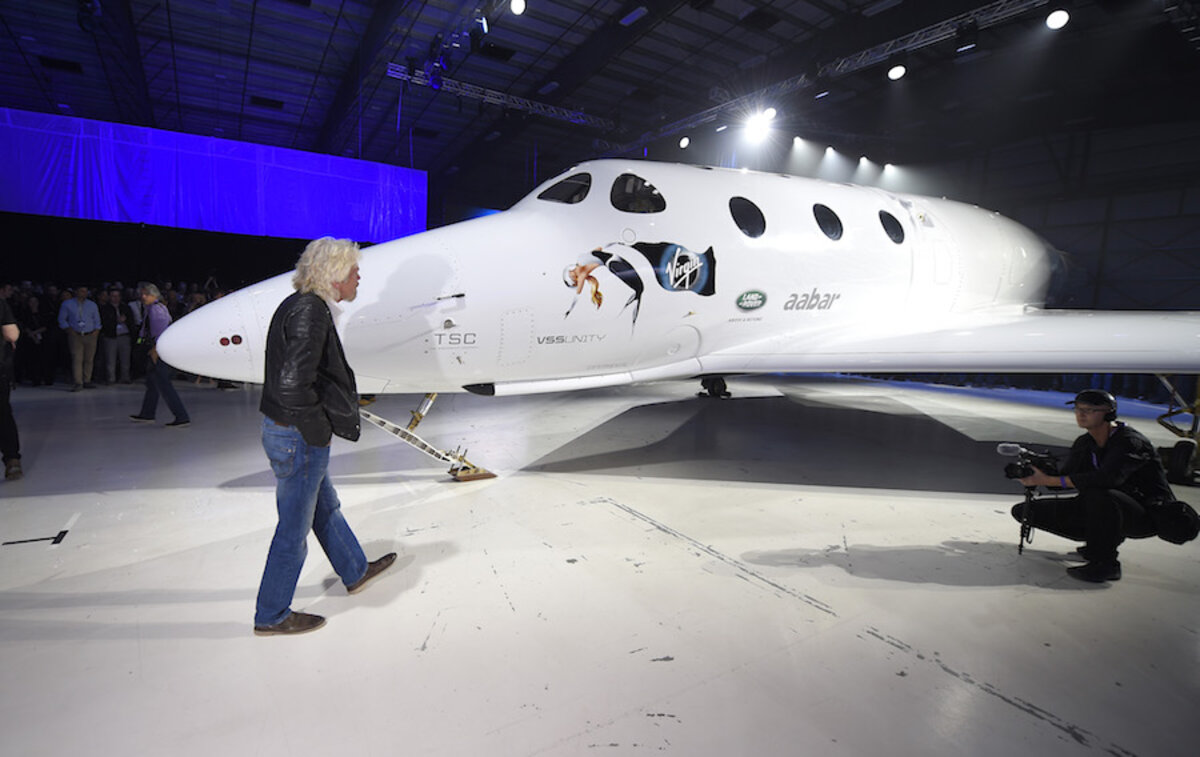How has Virgin Galactic made their latest spaceship safer?
Loading...
Virgin Galactic will soon be back in the sky and, eventually, space.
On Friday, Richard Branson, the billionaire owner of Virgin Galactic, unveiled the company’s newest spacecraft, named Virgin Space Ship Unity. The spacecraft will allow Virgin Galactic to continue its pursuit of space tourism almost 16 months after its first craft was destroyed in a flight-test accident.
The launch event f towing the brand new spacecraft, a christening by Branson’s one-year-old grandson, and celebrity appearances. The space tourism company got a boost in publicity from a recorded message from theoretical physicist Stephen Hawking, who said he planned on getting on board the craft.
“If I am able to go – and if Richard will still take me, I would be very proud to ,” Mr. Hawking said in his message.
Despite the hype and the $250,000 price tag for a seat, the last lingering question for potential patrons could be: Is it safe?
“We have a new spaceship that’s going to be ready in a few months,” Virgin Galactic CEO George Whitesides said to TechTimes after the 2014 crash. “So we’re going to make sure we and keep going.”
Virgin Galactic’s original SpaceShipTwo, which shared the same design as the new Space Ship Unity, experienced a catastrophic crash in October of 2014, killing one of the pilots and severely injuring the other. For a short time after the crash, many speculated whether it would be the end of Virgin Galactic’s space tourism aspirations, but the company recommitted after learning the crash was caused by piloting error.
A side-by-side comparison of the Virgin Space Ship Unity and the destroyed vehicle show little difference. The two are nearly identical with the same model and manufacturing of Unity began in 2012, before the accident or any redesigns occurred. However, the Unity does feature small safety additions.
A crucial pin has been added to prevent a pilot from accidentally unlocking the feathering mechanism on the ship’s tail, which caused the first crash, Mr. Whitesides told Reuters.
The aircraft is designed to take passengers to the outer edge of Earth's atmosphere, some 60 miles up, then gradually descend, slowed by the feather system – which creates aerodynamic drag as the craft returns to the ground.
The latest design reportedly features some improvements to make the landing gear more distinct have also been added.
Are those small changes enough? Yes, for enthusiasts. Maybe, for the Federal Aviation Administration.
The 2014 crash was caused by a piloting error, but the National Transportation Safety Board (NTSB) also , who built the aircraft and employed the pilots, and cited the FAA for lax regulations, according to The Los Angeles Times.
The FAA’s current guidelines for spaceflight regulations have been focused on not hampering innovation with restrictions. The result is regulations around the safety of the environment, national security, and people on the ground, but a for the company testing in the air.
It’s unclear how, but the FAA could change their regulations following the previous Virgin Galactic crash and the recommendations of the NTSB.
“We can expect more safety regulations on the industry,” Thomas Anthony, director of USC's Aviation Safety and Security Program told the Los Angeles Times. “Safety is always a balancing act, even with commercial aviation.”
However, safety concerns has not prompted hesitation or slowed ticket sales for enthusiasts. ���Ǵ��� previously reported almost 700 people have signed up for rides at a price of $250,000 each.
“Together, we can make space accessible in a way that has only been dreamt of before now, and by doing so can bring positive change to life on Earth,” Branson said in the press release.





